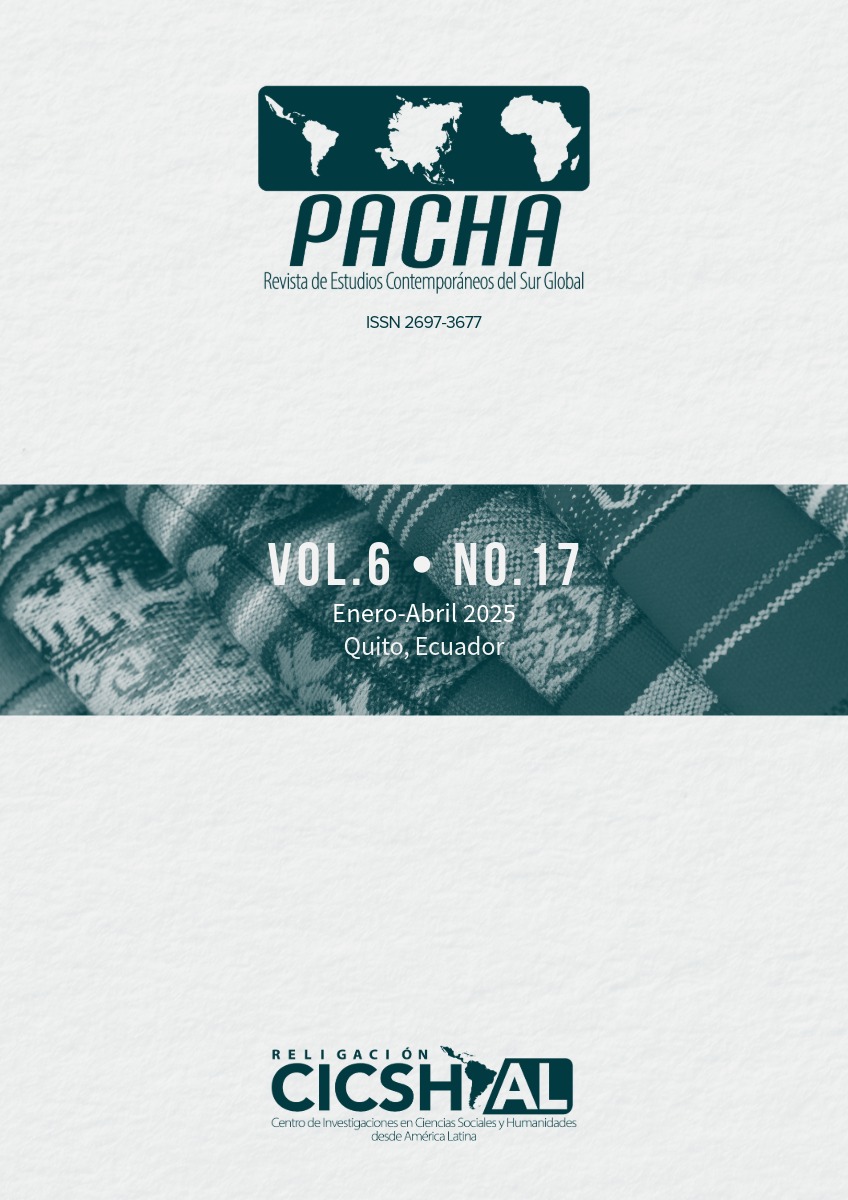Abstract
The study analyzes the effectiveness of current strategies to attract foreign investment in Quito, considering the lack of adequate incentives and effective communication with investors. The main objective is to evaluate these strategies, highlighting their strengths and identifying their weaknesses. The research takes a qualitative, descriptive and transversal approach; semi-structured interviews were conducted with eight experts in the field of investment promotion and attraction. The results show that attracting investment faces the challenges of implementing Bilateral Investment Treaties (BITs), as well as achieving the necessary confidence in investors, The administrative management of public bodies is becoming increasingly important through the simplification of formalities. In addition, it was observed that the foreign direct investment received by the city has had an impact on the real estate and tourism sectors, which has triggered an increase of employment and the dynamization of the economy. The findings highlight the need to strengthen strategies for attracting foreign investment, especially by optimizing incentives. In order to improve this process, it is recommended that administrative procedures be simplified, and confidence-building measures be taken to attract investment in strategic sectors.
References
Cerquera-Losada, Ó. H., & Rojas-Velásquez, L. (2020). Inversión extranjera directa y crecimiento económico en Colombia. Revista Facultad de Ciencias Económicas, 28(2), 9-26. https://doi.org/10.18359/rfce.4202
Coba-Ramos, D. P., & Vásconez-Acuña, L. G. (2024). El papel de los incentivos fiscales en la atracción de inversiones extranjeras: Estudio de casos internacionales. Revista Metropolitana de Ciencias Aplicadas, 7(1), 155-165. https://doi.org/10.62452/pc1zvd78
Espín, J. A., Córdova, A. C., & López, G. E. (2016). Inversión Extranjera Directa: Su incidencia en la tasa de empleo del Ecuador. Retos, 6(12), 215. https://doi.org/10.17163/ret.n12.2016.06
Fernández Izquierdo, M. Á., Muñoz Torres, M. J., Rivera Lirio, J. M., Ferrero Ferrero, I., & Escrig Olmedo, E. (2022). La inversión sostenible como integradora de los aspectos sociolaborales, ambientales y de gobernanza en el mercado financiero: Productos, medición y normativa en Europa. Revista de Trabajo y Seguridad Social. CEF, (469), 203-229. https://doi.org/10.51302/rtss.2022.3267
García, P. M., López, A., & Ons, Álvaro, Á. (2021). Las políticas hacia la inversión extranjera directa. Inter-American Development Bank. https://doi.org/10.18235/0003016
García-Bolívar, O. E. (2015). La crisis del derecho internacional de inversiones extranjeras: Propuestas de reforma. Rev. secr. Trib. perm. revis, 3(5), 137-163. https://doi.org/10.16890/rstpr.a3.n5.137
Góes, H. A. D. A., Reis, G. G., & Abib, G. (2021). When stakeholder theory meets justification theory: an intersection proposal. Cadernos EBAPE.BR, 19(4), 901-917. https://doi.org/10.1590/1679-395120200179
Guisado Litterio, T. M. (2020). La efectividad de los acuerdos de protección de inversiones para la atracción de inversiones extranjeras. CUPEA Cuadernos de Política Exterior Argentina, 128, 7-16. https://doi.org/10.35305/cc.vi128.22
Harding, T., & Javorcik, B. S. (2013). Investment Promotion and FDI Inflows: Quality Matters. CESifo Economic Studies, 59(2), 337-359. https://doi.org/10.1093/cesifo/ifs029
Mahajan, R., Lim, W. M., Sareen, M., Kumar, S., & Panwar, R. (2023). Stakeholder theory. Journal of Business Research, 166. https://doi.org/10.1016/j.jbusres.2023.114104
Miranda, R., Lanzilotta, B., & Leira, E. (2022). Calidad de gobierno como motor de atracción de la inversión extranjera directa en los países de América Latina y OECD. Revista Desarrollo y Sociedad, 92, 237-271. https://doi.org/10.13043/DYS.92.7
Neira Orellana, E. (2009). Cultura jurídica y protección de las inversiones extranjeras. Revista Ecuatoriana de Arbitraje, 1. https://doi.org/10.18272/rea.i1.3622
Olanipekun, Lateef, 2023, Book of Journals for Covenant University, p. 284
Ortega-Sánchez, R. M. (2021). Uso de Herramientas Tecnológicas en Tiempos de COVID-19. Revista Tecnológica-Educativa Docentes 2.0, 1(1), 31-39. https://doi.org/10.37843/rted.v1i1.223
Piedrahita Ramírez, J. M., & Nieto Quintero, L. T. (2019). Determinantes de la inversión extranjera directa para Colombia en el periodo comprendido entre 2000-2018. Revista de Investigaciones Universidad del Quindío, 31(1), 73-83. https://doi.org/10.33975/riuq.vol31n1.265
Rice, E. A. B. (2013). El papel de la Ventaja Competitiva en el desarrollo económico de los países. Análisis Económico, XXVIII(69), 55-78.
Rodriguez Camacho, M. (2021). Implementación de los incentivos tributarios en el Ecuador como instrumento para la atracción de la inversión extranjera directa. Centro Sur, 4(2), 237-251. https://doi.org/10.37955/cs.v4i2.83
Taylhardat, A. (2022). Colaboración nacional-subnacional como factor de competitividad en la atracción y facilitación de inversiones. IDB Publications. https://doi.org/10.18235/0004674
Van ‘T Riet, M., & Lejour, A. (2018). Optimal tax routing: Network analysis of FDI diversion. International Tax and Public Finance, 25(5), 1321-1371. https://doi.org/10.1007/s10797-018-9491-6
Volpe Martincus, C., Marra De Artiñano, I., Sztajerowska, M., & Carballo, J. (2021). Making the Invisible Visible: Investment Promotion and Multinational Production in Latin America and the Caribbean. Inter-American Development Bank. https://doi.org/10.18235/0003807
Zavala, D. I. (2016). Crítica a la Teoría Clásica del Comercio Internacional, un enfoque de equilibrio general entre país grande y país pequeño. Economía Informa, 397, 61-79. https://doi.org/10.1016/j.ecin.2016.03.004

This work is licensed under a Creative Commons Attribution-NonCommercial-NoDerivatives 4.0 International License.
Copyright (c) 2025 Fabián Alejandro Santamaría-Benalcázar, Edwin Joselito Vásquez- Erazo, Glenda Maricela Ramon- Poma




